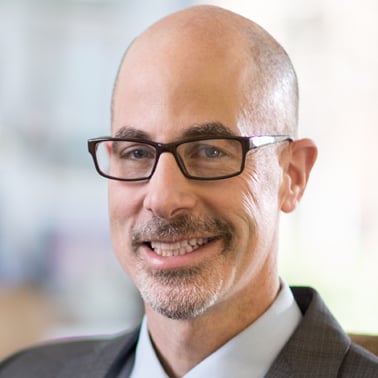Ken Segel relays insights learned by executives of a large academic health system when they went to the frontline to silently observe worker/patient interactions, in this post, originally published on Mark Graban's Lean Blog.
A hospital chief nursing officer (CNO) at a major academic health system nailed it with that statement. It's a core diagnosis of what's moving in the wrong direction in American healthcare, and a hint of simple, powerful steps to help leaders start on the path to
She had just come back from a structured “go and see” experience where leaders had directly and silently observed the work (for 40 minutes) of an RN admitting a patient to an inpatient medical-surgical unit, a process that occurs more than a hundred times a day.
The CNO, like most others who take the time to do this, took away some fundamental, typical impressions:
- The depth of talent, knowledge and compassion demonstrated by the nurse toward the patient was tremendous, and these leaders were moved and energized by the combination of caring and expertise.
- The observed process had obvious, embedded problems that consumed large amounts of the nurse's time, every time. The nurse was forced to enter the same information multiple times, remember massive amounts of data in her head, fight through multiple interruptions to stay on track, and several others. The net impact was the nurse was able to provide value-added support to the patient for about 20% of the time observed, but spent 80% of her time doing tasks that were not value-added or were pure waste. (And, in my view, this admissions process was better structured than most hospitals!)
The CNO and her colleagues realized the opportunity that this represented. By better supporting the people who do the work to enable them to solve the frontline problems, these leaders recognized the chance to make things better for patients, and staff, and every type of desirable outcome for the health system. But how?
Another few insights from the leaders provided the needed clues:
First, most of the problems the nurse encountered crossed out of the unit to other “internal customer” and supplier departments, such as the emergency room, IT and pharmacy. So while the problems were regularly and repeatedly
The big “aha” came when the CNO and the rest of the C-suite leaders realized that if they were regularly in touch with what's happening in the core processes of the organization, repeatedly — and organized their time to make sure the whole leadership system was oriented accordingly — then problems could be worked across department walls to root cause solutions in much more efficient fashion (some in almost “real time”).
It is not the leaders' role to determine solutions in top-down fashion, but to link their work directly to know what problems the staff are facing, and to help the staff design improvements by clearing barriers, providing resources, and coaching to develop each layer in the organization as capable problem solvers and coaches of problem solving.
Secondly, the leaders reflected on how, today, they typically spent their time instead. The answer was meetings, for hour after hour after hour (this may sound familiar to other healthcare leaders).
In meetings, the conversation about problems and improvement opportunities is often more abstract, less fact-based, and more subject to power and personality dynamics. Meetings also typically involve few who do or know the actual work, and can lack urgency to act to make things better, let alone act to address the real problems at their root. In the meantime, the core problems and wastes of the organization unnecessarily roll on.
How Did We Get to this State?
The professional and operational silos of healthcare have always predisposed it to too much bureaucracy and politics in problem solving. The rapid consolidation and continued increases in red tape affecting the sector have only made things worse. As leaders get pulled more and more into meeting rooms (as institutions get bigger and more bureaucratic), the potential to capture the value of a supportive focus on frontline operational excellence and problem solving gets harder. In other words, leaders are often too far from the problems and processes that keep their providers and staff from delivering the highest value and quality to patients.
How Do We Get Out of It?
Helping today's healthcare leaders act on their fundamental responsibility to create and oversee the systems needed to drive operational excellence across their complex enterprises is the simplistic answer. But that can sound daunting, abstract and like jargon to leaders. So, because every journey begins with a step, how to get started?
Our CNO's spot-on diagnosis suggests some powerful first steps.
- Participate in facilitated, structured observations of frontline work, in a professionally safe manner, and compare findings to the principles of operational excellence. Leaders literally see how the staff are their greatest resource, and that they are trapped in inefficient systems because of embedded problems.
- Participate in structured discussions of those observation experiences, thinking especially hard about the implications for leaders and the structure of leader work, today and in a more desirable target state.
- Design that more desirable “frontline-focused” target state for the leadership system, together with help to identify and radically reduce unnecessary meeting time, and replace much of it with direct value-added connection tied directly to the work.
- And, of course, implement those changes in the leaders' work, learn, and create a continuous cycle of refinement and improvement, tied more directly to the core work being done every day on the frontline to meet the needs of patients.
In a world where the language of improvement can often feel like the next “flavor of the month,” helping leaders focus on the fundamental truths uttered by their colleagues can help set the direction toward operational excellence, with clarity and energy, with less jargon and less harbored doubt. “We have gotten too far away from our people, and the processes they do every day. And we can change that.”


Submit a comment